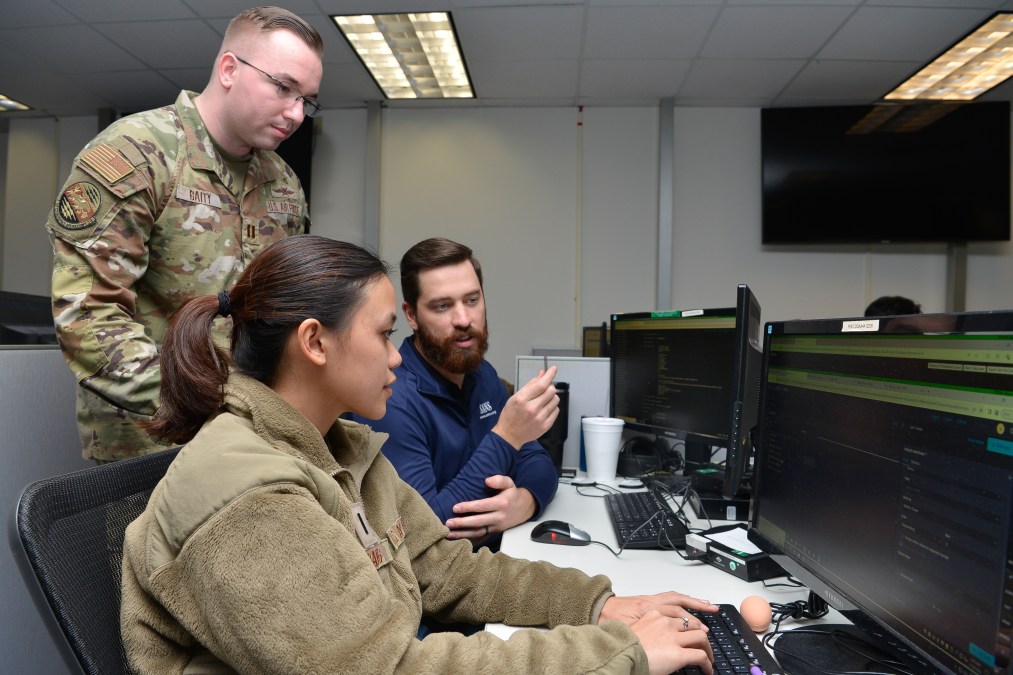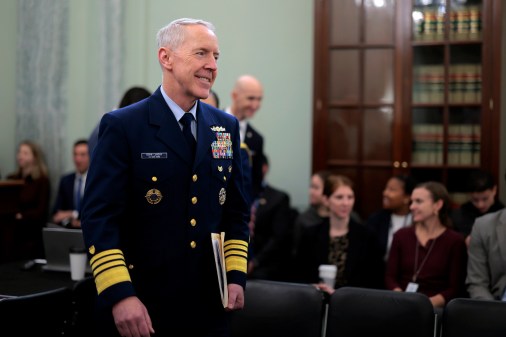Space Force installs mission analysis team at Fort Meade to assess adding component to Cyber Command

The Space Force has created a mission analysis team at Fort Meade working with U.S. Cyber Command and the NSA to determine what a space component of Cybercom could look like, according to a senior service official.
“The next tranche [of components] will include U.S. Cyber Command,” Col. Zach Warakomski, senior cyber officer within the Space Force, said Wednesday at the Space IT day hosted by AFCEA’s Northern Virginia chapter. “In fact, we have a cyber mission analysis team. It is out at Fort Meade. It’s just a handful of folks, but they are sitting in the spaces alongside U.S. Cyber Command and NSA to determine its proximity for RFIs – request for information – to be able to figure out exactly what we’re going to look like, what we’re going to present, and then in terms of location, there are some other aspects for consideration there. But that will all be presented to [Cybercom Commander] Gen. [Timothy] Haugh and [Chief of Space Operations] Gen. [Chance] Saltzman here in the relatively near future.”
Since its creation in 2019, Space Force has sought to develop service components for all combatant commands, just as the other military services have. However, according to a Space Force spokesperson, the service is currently focused on properly resourcing current components to Space Command, Indo-Pacific Command, U.S. Forces Korea, Central Command, European Command and Africa Command before setting any immediate plans or deadlines regarding resourcing a component to Cybercom.
“We want to ensure our current service components are properly resourced before standing up more. No plans have been finalized regarding the standup of more components … implementation planning for future activations is ongoing,” the spokesperson stated. “The U.S. Space Force is evaluating how we fully integrate into the Joint Force as part of the Department of the Air Force Reoptimizing for Great Power Competition initiative, to include the completing the standup and resourcing of USSF service components. Like the other military services, the Space Force must prepare and present forces and personnel to every Combatant Command.”
A Cybercom spokesperson referred questions regarding the matter to the Space Force.
Each military service besides Space Force currently has a service cyber component to Cybercom — just as they do for all combatant commands — and has requirements to provide Cybercom a set number of personnel and teams to the joint cyber mission force, which conducts offensive and defensive cyber operations.
Lt. Gen. DeAnna Burt, the Space Force’s deputy chief of space operations for operations, cyber and nuclear, said in August that the service was in the process of working with Cybercom regarding what the service component looks like, with a spokesperson later adding those discussions began earlier in 2023.
Since the creation of the Space Force in 2019, there has been speculation as to whether and when it would supply a service cyber component to Cybercom.
It is not clear at this point what that component will look like, how many personnel it would contribute to the cyber mission force or how many cyber mission force teams it would provide – either defensive, offensive or support teams, which can range from 39 to more than 60 individuals.
The Department of Defense approved the addition of 14 more cyber mission force teams in the fiscal 2022 budget that are being built in phases over five years.
Since last year, two guardians from Space Operations Command have been serving as members of the Air Force’s cyber mission force.
The Space Force does have cyber personnel, mostly in its Delta 6, who perform cyber defense of Space Force assets, such as ground terminals.
Last year, Burt suggested a Space Force component could support Space Command. Currently, the Air Force’s cyber component, through its Joint Force Headquarters-Cyber Air Force, is the coordinating authority for planning and synchronizing cyber support and operations for Spacecom.
DefenseScoop reporter Mikayla Easley contributed to this story.






